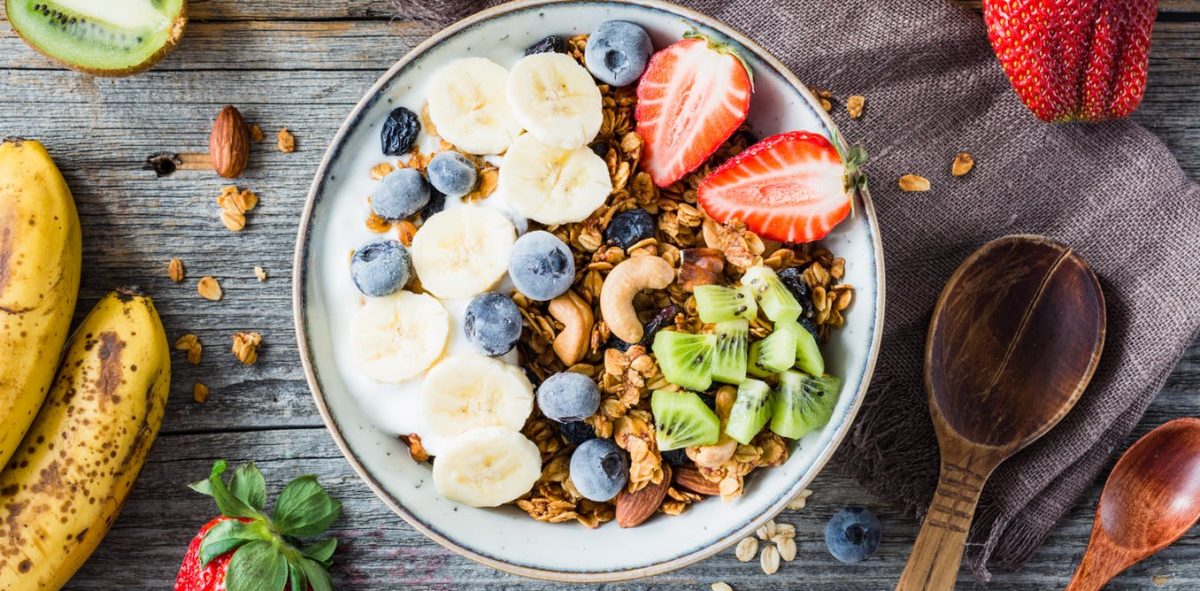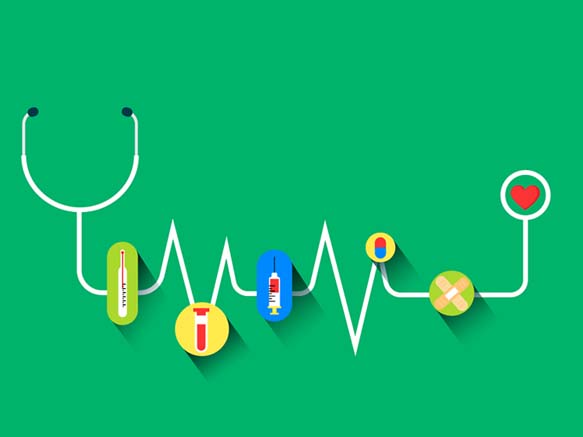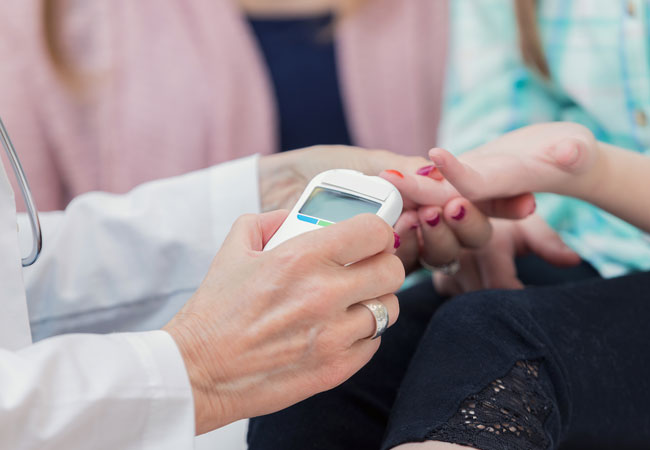What is Diabetes?
Diabetes is a medical condition that affects the body’s ability to use or produce insulin thereby affecting blood sugar levels. There are 3 types of diabetes including type 1, type 2 and gestational diabetes. Type 1 diabetes affects the body’s ability to produce insulin while type 2 diabetes affects the body’s ability to use insulin efficiently. Gestational diabetes affects the body’s ability to useinsulin during pregnancy.

What is Diabetes?
Diabetes is a medical condition that affects the body’s ability to use or produce insulin thereby affecting blood sugar levels. There are 3 types of diabetes including type 1, type 2 and gestational diabetes. Type 1 diabetes affects the body’s ability to produce insulin while type 2 diabetes affects the body’s ability to use insulin efficiently. Gestational diabetes affects the body’s ability to use insulin during pregnancy.
The cause of type 1 diabetes is not understood and is not preventable or curable at this time. However, people diagnosed with or at risk of type 2 diabetes can engage in lifestyle changes that will improve their overall quality of life and even prevent the onset of diabetes entirely.
The Original Super Food No One Talks About:
“Let thy food be thy medicine, and thy medicine be thy food.” –Hippocrates
Everyone knows that the human body needs fiber. However, did you know that fiber is the original super food? Hippocrates, the father of medicine, first recommended eating whole wheat as a way of keeping the bowels healthy nearly 2,500 years ago. Though, fiber can do so much more than simply keep you regular.
There are actually two main kinds of fiber including soluble and insoluble fiber. Insoluble fiber or roughage is found in bran, cereals, and whole grains like wheat, oats, rice and barley. Insoluble fibre absorbs up to fifteen times its own weight in water which helps prevent constipation. By allowing you to feel fuller longer, fiber is also a weight loss promoter.Soluble fiber is mainly found in oats, rye, lentils, beans and vegetables. This also helps you feel fuller longer and can lower high blood sugar and cholesterol.
Our daily intake of fiber should be at 25g. You can achieve this easily by starting your day with a high fiber breakfast like oats or bran with bananas. Fruits and vegetables are also rich in fiber like broccoli, cabbage, oranges, dates and berries. These foods when eaten in abundance will keep you full and focused and prevent cravings for high fat, oil rich snacks and foods throughout the day.
Though, increasing your intake of fiber suddenly can increase gas and bloating, especially if you’re eating a high amount of pulses and beans. If you eat fiber regularly over a long period of time however, the side-effects can be kept to a minimum while still reaping the benefits.

Here are more fascinating facts about fiber!
- Eating a high-fiber diet could cut your risk of developing diabetes by up to a third.
- People who started eating a high-fiber diet reported a 10% increase in energy levels within just two weeks.
- For every 10g of fiber you eat every day, your risk of heart disease drops by 14%.
- Doubling your fiber intake from 13g a day (the average in the UK) to 25g a day could cut your risk of bowel cancer by 40%.
The Bottom Line
A plant-based diet rich in whole grains, fruits and vegetables will also be incredibly high in fiber and include nutrient rich foods that can be eaten abundantly, promote weight loss, and treat type 2 diabetes or prevent its onset entirely.
A Few Words about Animal Protein and Fat:
We often hear from mainstream media that carbohydrates are the bane of every dieter’s existence and can spike blood sugar levels increasing your risk of diabetes. However when compared to a cup of oats, a cup and a half of white flour pasta and a large apple, a single beef burger patty without a bun caused more than double the insulin spike of each plant food. The same result was found when salmon was compared to these foods. In fact, meat increases insulin just as much as pure sugar.

What is Diabetes?
Diabetes is a medical condition that affects the body’s ability to use or produce insulin thereby affecting blood sugar levels. There are 3 types of diabetes including type 1, type 2 and gestational diabetes. Type 1 diabetes affects the body’s ability to produce insulin while type 2 diabetes affects the body’s ability to use insulin efficiently. Gestational diabetes affects the body’s ability to use insulin during pregnancy.
The cause of type 1 diabetes is not understood and is not preventable or curable at this time. However, people diagnosed with or at risk of type 2 diabetes can engage in lifestyle changes that will improve their overall quality of life and even prevent the onset of diabetes entirely.
The Original Super Food No One Talks About:
“Let thy food be thy medicine, and thy medicine be thy food.” –Hippocrates
Everyone knows that the human body needs fiber. However, did you know that fiber is the original super food? Hippocrates, the father of medicine, first recommended eating whole wheat as a way of keeping the bowels healthy nearly 2,500 years ago. Though, fiber can do so much more than simply keep you regular.
There are actually two main kinds of fiber including soluble and insoluble fiber. Insoluble fiber or roughage is found in bran, cereals, and whole grains like wheat, oats, rice and barley. Insoluble fibre absorbs up to fifteen times its own weight in water which helps prevent constipation. By allowing you to feel fuller longer, fiber is also a weight loss promoter.Soluble fiber is mainly found in oats, rye, lentils, beans and vegetables. This also helps you feel fuller longer and can lower high blood sugar and cholesterol.
Our daily intake of fiber should be at 25g. You can achieve this easily by starting your day with a high fiber breakfast like oats or bran with bananas. Fruits and vegetables are also rich in fiber like broccoli, cabbage, oranges, dates and berries. These foods when eaten in abundance will keep you full and focused and prevent cravings for high fat, oil rich snacks and foods throughout the day.
Though, increasing your intake of fiber suddenly can increase gas and bloating, especially if you’re eating a high amount of pulses and beans. If you eat fiber regularly over a long period of time however, the side-effects can be kept to a minimum while still reaping the benefits.
Here are more fascinating facts about fiber!
- Eating a high-fiber diet could cut your risk of developing diabetes by up to a third.
- People who started eating a high-fiber diet reported a 10% increase in energy levels within just two weeks.
- For every 10g of fiber you eat every day, your risk of heart disease drops by 14%.
- Doubling your fiber intake from 13g a day (the average in the UK) to 25g a day could cut your risk of bowel cancer by 40%.
The Bottom Line
A plant-based diet rich in whole grains, fruits and vegetables will also be incredibly high in fiber and include nutrient rich foods that can be eaten abundantly, promote weight loss, and treat type 2 diabetes or prevent its onset entirely.
A Few Words about Animal Protein and Fat:
We often hear from mainstream media that carbohydrates are the bane of every dieter’s existence and can spike blood sugar levels increasing your risk of diabetes. However when compared to a cup of oats, a cup and a half of white flour pasta and a large apple, a single beef burger patty without a bun caused more than double the insulin spike of each plant food. The same result was found when salmon was compared to these foods. In fact, meat increases insulin just as much as pure sugar.
Monique van Nielen, PhD, from the division of nutrition, Wageningen University, the Netherlands, and colleagues conducted a prospective analysis as part of the European Prospective Investigation into Cancer and Nutrition-InterAct case-control study (EPIC-InterAct). The goal of InterAct is to investigate how both genetic and lifestyle factors cause diabetes in European countries.
The current analysis included 10,901 incidents of type 2 diabetes cases and a sub cohort of 15,352 participants, including 736 diabetes cases, with a mean follow-up of 12 years. The study covers cases occurring in EPIC cohorts between 1991 and 2007 in 8 countries.
The researchers found that, overall, high total protein intake was associated with a 13% higher incidence of diabetes for every 10g increment after adjusting for energy intake, center, sex, diabetes risk factors, and dietary factors. Overall, the researchers concluded that “a greater intake of total protein is associated with a higher type 2 diabetes risk in European countries…”
A number of doctors in the U.S. including clinical researcher and author Dr. Neal Barnard are treating and even reversing type 2 diabetes with a high fiber, low fat plant-based diet. In fact, a study published in the August 2006 issue of Diabetes Care found Dr. Barnard’s treatment to be 3 times more effective than the American Diabetes Association’s guidelines on how to control blood sugar.
The studies further show that by adopting a low-fat vegetarian diet—free of all animal products and added vegetable oils—individuals can lower their cholesterol, reduce their blood pressure, and lose weight. Best of all, the diet doesn’t demand calorie counting, cutting portion sizes, or giving up all carbohydrates. On the contrary, you can eat as much as you want—hallelujah, sign me up!
You Have to Exercise:
That’s right. HAVE TO.

While diet is first and foremost vital to a healthy lifestyle and diabetes management and prevention, exercise is also highly effective at maintaining blood sugar levels, a healthy weight and a healthy heart.
Engaging in 30 minutes of physical activity daily can make a huge difference however, feel free start small with 3 to 5 days a week and slowly increase your level of activity. Even better, exercise does not have to be strenuous to be effective. Moderate, low-impact physical activity can help achieve weight loss including:
- Dancing
- Cycling
- Swimming
- Aerobics
- Elliptical machines
- Walking
If the activity you perform raises and keeps your heart rate up, it will be effective at weight loss and diabetes prevention when also coupled with a plant-based diet.
Quit Smoking, Seriously:
Smokers are significantly more likely to have diabetes and according to the Harvard School of Public Health, smokers are 50 percent more likely to develop type 2 diabetes than are people who don’t smoke.
Though, quitting smoking is no easy task. People who have developed the habit over time must work hard to break it. However, many helpful resources exist. Support groups exist to help people successfully quit and nicotine patches and gums can also help to ease cravings. While quitting may take some time, it can reduce your diabetes risk and drastically improve overall health.
Stop Drinking Excessive Amounts of Alcohol:
According to the Harvard School of Public Health, consuming excess alcohol increases diabetes risk.
However, moderate alcohol consumption in people who want to continue drinking alcohol may have protective effects against diabetes. Drinking a moderate amount of alcohol helps the body use blood glucose more effectively. For men, this is no more than two drinks per day. For women, moderate consumption is no more than one drink per day.
If you do not currently drink alcohol, there is no need to start. An alcohol-free lifestyle is also an effective way of reducing diabetes risk. At Home Remedies :

When it comes to the supplement industry, there is a plethora of deceptive marketing that preys on ignorance making it difficult to know what works and what doesn’t. So, I have provided a breakdown of my favorite dietary supplement known as FENFURO, a group of furostanolic saponins, derived from fenugreek seeds (Trigonellafoenumgraecum).
Fenugreek is an herb derived from Ukraine, India, China and the Mediterranean region. The ripe, dry seeds found in fenugreek contain protein, vitamins, niacin, potassium, and diosgenin as well as alkaloids, lysine, L-tryptophan and steroidal saponins. Studies suggest that fenugreek seed extract contains properties that can lower cholesterol and blood sugar. FENFURO contains a rich variety of saponins and flavonoids, all substances known to lower blood lipid levels and a play valuable role in glucose regulation.It is patented and clinically evaluated with proven safety and efficacy. For more information visit www.fenfuro.com
Conclusion
If you’re worried about developing type 2 diabetes, you’re not alone. There are a number of risk factors to consider including family history, ethnicity and other environmental factors. However, making a few lifestyle changes is often the solution for many people worldwide. The key is to act now before this disease spins out of control putting you at risk for complications like heart problems, nerve damage, blindness, stroke or kidney failure. Wondering where to begin? You can start small by adding a supplement, swapping bacon and eggs for oats, berries and coconut milk and walking for 15 minutes. Diabetes is a serious illness but with help from your doctor, it can be treated and even prevented.
The statement and product mentioned in this article have not been evaluated by the FDA to diagnose, treat, cure or prevent any disease.

























 Many people avoid the long-term problems of diabetes by taking good care of themselves. Work with your health care team to reach your ABC goals (A1C, Blood Pressure, Cholesterol): Use this self-care plan.
Many people avoid the long-term problems of diabetes by taking good care of themselves. Work with your health care team to reach your ABC goals (A1C, Blood Pressure, Cholesterol): Use this self-care plan.


